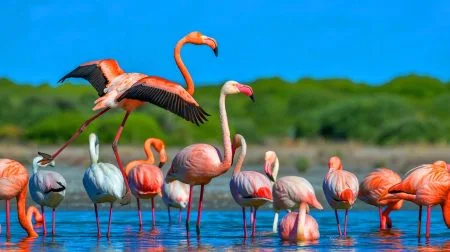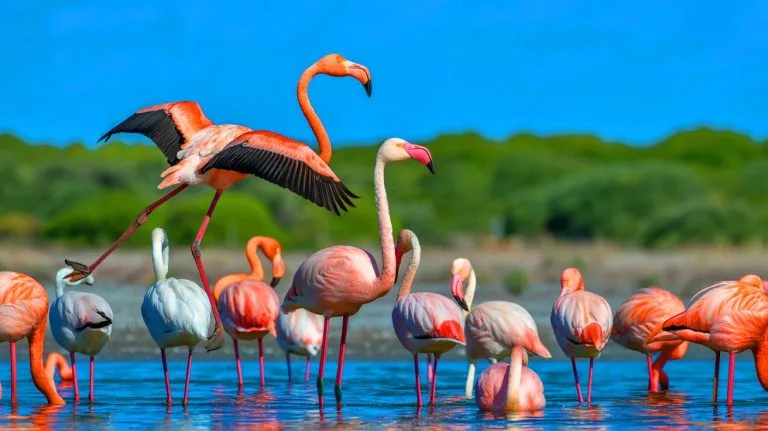| IN A NUTSHELL |
|
The intricate process of aging has captivated scientists and researchers for centuries. While some organisms exhibit signs of aging in mere hours, others persist for decades or even centuries before showing any decline. This universal phenomenon has fueled extensive research into the mechanisms that govern aging, with the hope of uncovering ways to decelerate the inevitable march of time. Recent research published in the Proceedings of the National Academy of Sciences (PNAS) offers a fascinating insight: among flamingos, migratory individuals tend to age more slowly than their sedentary counterparts.
Migratory Habits and Aging
Recent studies conducted in the Camargue region of France have shed light on the aging patterns of flamingos, revealing a distinct difference between migratory and sedentary populations. The research, a collaborative effort involving multiple universities and the Tour du Valat research institute, focused on these iconic birds, a significant draw for tourism in the area. Flamingos in the Camargue are categorized into two groups: residents, who spend their entire lives in the same location, and migrants, who journey across the Mediterranean, wintering in Italy, Spain, or North Africa.
The extensive dataset, amassed over nearly 40 years of bird marking and monitoring, provided researchers with a wealth of information. Analysis of this data revealed a curious finding: resident flamingos tend to show signs of aging around 20 years of age, whereas migratory flamingos begin to exhibit similar signs at approximately 22 years. This two-year difference in aging onset suggests that migratory behavior may play a role in extending the youthfulness of these birds.
“Donate Your Pets To Lions”: Zoo’s Shocking Plea Sparks Outrage And Heartbreak Across The Nation
The Trade-Off: Longevity vs. Early Life Challenges
The slower aging observed in migratory flamingos comes at a cost. While these birds enjoy a prolonged youthful period, they face lower reproductive rates and higher mortality rates during their early years compared to their sedentary counterparts. In essence, flamingos that remain in one location experience a more comfortable early life but age more quickly. Conversely, those that migrate endure more challenges in their youth but benefit from extended vitality.
This trade-off presents a complex decision for flamingos: endure the dangers of migration for the chance of a longer reproductive lifespan, or opt for a stable early life knowing it may lead to earlier signs of aging. The findings underscore the notion that aging is not a uniform process. Instead, it is influenced by a myriad of factors, including genetics and environmental conditions.
Insights into Aging Mechanisms
Understanding the aging process in flamingos provides valuable insights into broader biological aging mechanisms. The study’s findings suggest that aging is a multifaceted phenomenon influenced by both genetic predispositions and environmental factors. Within the same species, significant variations in aging patterns can occur based on behavioral and environmental conditions.
This complexity highlights the need for a nuanced approach to aging research, considering both intrinsic and extrinsic factors. While genetic research continues to play a pivotal role in understanding aging, studies like this one emphasize the significance of lifestyle and environmental influences. Such insights could eventually aid in the development of interventions aimed at prolonging healthy lifespans in humans.
Implications for Conservation and Future Research
The revelations from this study extend beyond the scientific community, offering important implications for conservation efforts. Understanding how migratory behaviors impact the lifespan and reproductive success of flamingos can inform strategies to protect these species in the wild. As habitats change due to climate change and human activities, ensuring the survival of migratory species becomes increasingly vital.
Future research could explore similar aging patterns in other migratory species, providing a more comprehensive understanding of the interplay between migration and aging. Additionally, further studies could investigate the specific environmental factors that contribute to the slower aging observed in migratory flamingos, potentially uncovering new strategies for promoting longevity in other species, including humans.
This study opens the door to a deeper understanding of aging across species, challenging previous assumptions about its uniformity. As scientists continue to unravel the complexities of aging, a key question remains: how can this knowledge be harnessed to enhance the quality and duration of life in various species, including our own?
Did you like it? 4.5/5 (22)







Wow, who would’ve thought flamingos could teach us about aging? 🤔
Wow, who knew flamingos could teach us about aging? 🦩